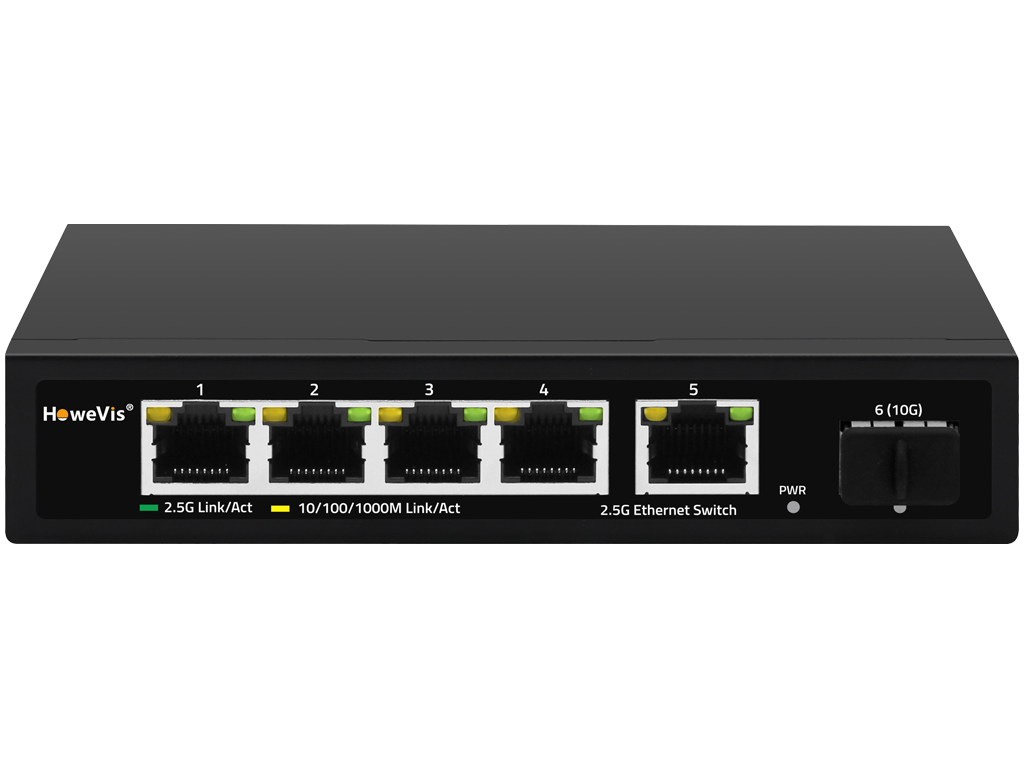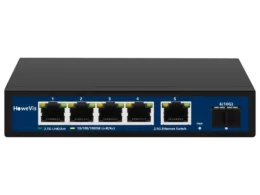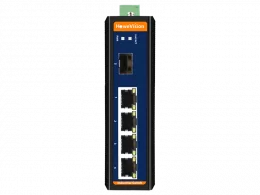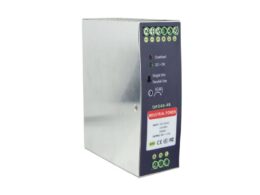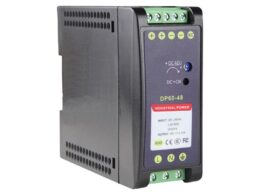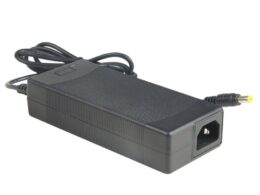Are you looking to simplify your network setup? Consider the 5-port POE switch. This device combines the power of a switch with Power over Ethernet (POE) capabilities, making it an efficient solution for connecting and powering multiple devices. With its DC12V capability, it offers even more versatility and convenience.
With a 5 port POE switch, you can easily connect and power compatible devices such as IP cameras, wireless access points, and VoIP phones using a single Ethernet cable. No need for separate power adapters or messy cables cluttering up your workspace when you have the convenience of using DC12V.
Whether you’re setting up a small office or expanding your home network, understanding the advantages of using a 5-port5-port POE switch can help streamline your connectivity needs.
So, let’s dive in and discover how these compact yet powerful devices can revolutionize your network setup.
Exploring 5 Port POE Switch Features
Power Output Options:
One of the key features to consider when exploring 5 port POE switches is the power output options they offer. These switches are designed to provide power over Ethernet, allowing you to connect and power devices such as IP cameras, wireless access points, and VoIP phones without needing separate power cables. Different power output options are available with a five-port POE switch, typically ranging from 15.4 watts per port to 30 watts per port. This flexibility allows you to choose the appropriate power level based on the requirements of your connected devices.
VLAN Capabilities:
Another essential feature five port POE switches offer is VLAN (Virtual Local Area Network) capabilities. VLANs enable you to segment your network into multiple virtual networks, effectively isolating traffic and enhancing security and performance. With a five-port POE switch supporting VLANs, you can group specific ports and assign them to different VLANs. This means that devices in one VLAN cannot communicate with devices in another VLAN unless specifically configured to do so. By implementing VLANs, you can improve network efficiency by reducing unnecessary broadcast traffic and ensuring that data flows only where it needs to go.

QoS Enhancements:
Quality of Service (QoS) capabilities are essential for five port POE switches. QoS allows you to prioritize specific network traffic over others, ensuring that critical applications or services receive the bandwidth and latency requirements for optimal performance. With a QoS-enabled switch, you can assign different priority levels to various types of traffic based on their importance. For example, voice or video data may require higher priority than regular web browsing or file transfers. By implementing QoS on your network through a five-port POE switch, you can prevent congestion and ensure smooth operation for time-sensitive applications.

Enhanced Network Performance:
You can significantly improve your network’s performance by taking advantage of the power output options, VLAN capabilities, and QoS enhancements five-port POE switches offer. These features allow for efficient power management, secure traffic segmentation, and prioritization of critical data. With a five-port POE switch, you can streamline your network infrastructure and ensure that it meets the demands of modern devices and applications.
Interface Options for 5 Port POE Switches
Understanding the different interface options is crucial. These options determine your network setup’s flexibility, scalability, and compatibility.
Ethernet Interface
The Ethernet interface is a standard option found in most five-port POE switches. It lets you connect devices using Ethernet cables and provides reliable and fast data transfer rates. With an Ethernet interface, you can easily connect devices such as computers, printers, IP cameras, and access points to your network.
One advantage of the Ethernet interface is its simplicity and widespread compatibility. Since Ethernet cables are commonly used in networking setups, you won’t have trouble finding compatible devices or connecting them to your switch.
SFP (Small Form-factor Pluggable) Interface
Another interface option available in some five-port POE switches is the SFP (Small Form-factor Pluggable) interface. This interface provides greater flexibility by allowing you to use different types of SFP modules for connectivity.
SFP modules, such as fiber optic or copper-based modules, come in various forms. With an SFP interface, you can choose between different media types depending on your needs. For example, fiber optic modules can be suitable for connecting devices over longer distances or in areas with electromagnetic interference.
The SFP interface also enables hot-swapping, which means you can replace or add SFP modules without shutting down the switch or disrupting network operations. This feature adds convenience and flexibility when expanding or modifying your network setup.
Impact on Network Scalability and Compatibility
The choice of interface options in a 5-port POE switch directly impacts your network’s scalability and compatibility.
Ethernet interfaces are widely supported and compatible with many devices, making them suitable for most small-scale network setups. However, if you require more flexibility or need to connect devices over longer distances, an SFP interface can offer greater scalability.
An SFP interface allows you to adapt to changing networking needs using different SFP modules. This makes it easier to upgrade your network without replacing the entire switch, and its hot-swapping capabilities minimize downtime during upgrades or maintenance.
Solar Power Systems and 5 Port POE Switch Usage
Solar power systems can be a game-changer, especially when integrated with 5-port POE switches. By harnessing the power of renewable energy, you can enjoy several advantages while ensuring a reliable and eco-friendly network infrastructure. Let’s dive into solar-powered networks and explore how these switches can be implemented.
Discover Integration Possibilities
The possibilities are endless. These switches are designed to support Power over Ethernet (POE) technology, allowing data and power transmission through a single Ethernet cable. This makes them ideal for pairing with solar panels or other renewable energy sources.
Connecting your solar panels to a charge controller allows you to convert the sun’s energy into usable electricity. This electricity is stored in batteries or used directly to power your network devices via the five-port POE switch. With this setup, you can ensure uninterrupted connectivity even in remote locations where traditional power sources are unavailable.
Embrace Renewable Energy Advantages
Using renewable energy to power your network devices offers numerous advantages. First and foremost, it helps reduce your carbon footprint by minimizing reliance on fossil fuels. Solar power is clean, abundant, and sustainable, making it an environmentally friendly alternative that aligns with green initiatives.
Solar-powered networks offer greater flexibility in terms of installation locations. The proximity to electrical outlets or the need for extensive wiring infrastructure no longer restricts you. This opens up opportunities for deploying network devices in areas without easy access to conventional power sources.
Furthermore, solar power systems can lead to significant cost savings in the long run. While initial investment costs may be associated with installing solar panels and battery storage systems, the ongoing operational expenses are significantly reduced as you tap into free and renewable solar energy.
Considerations for Implementation
Implementing solar-powered networks with five-port POE switches requires careful consideration of several factors. First, you need to assess the power requirements of your network devices and ensure that your solar power system can generate enough electricity to meet those needs. Proper sizing and capacity planning are crucial to avoid potential power shortages.
Next, it’s essential to evaluate the location and positioning of your solar panels to maximize sunlight exposure.
Vehicle POE Supply with 5 Port POE Switches
In today’s fast-paced world, vehicles are not just means of transportation; they have become mobile hubs for various applications. One crucial aspect of these applications is power supply, where five port POE switches come into play. These switches offer a convenient and efficient solution for vehicle-powering devices, enabling seamless operations in diverse fields such as mobile surveillance, transportation, and emergency services.
Explore the Benefits of Utilizing 5 Port POE Switches with Power Adapters in Vehicles for DC12V
Traditional methods, like individual power adapters, can be cumbersome and inefficient. That’s where five port POE switches shine. These switches provide power over Ethernet (POE) capabilities, allowing multiple devices to receive power through a single switch. This eliminates the need for multiple power adapters and simplifies the installation process.
With a 5-port POE switch, you can connect and power various devices simultaneously. Whether it’s cameras for mobile surveillance or communication equipment in emergency service vehicles, these switches offer a centralized power supply solution that ensures all connected devices receive consistent and reliable power.
Applications of 5 Port POE Switches in Vehicles
One prominent application of 5 port POE switches is in mobile surveillance systems. Law enforcement agencies and private security firms often rely on vehicle-mounted cameras to monitor public spaces or gather evidence during investigations. Utilizing a five-port POE switch, these cameras can be powered directly from the vehicle’s electrical system, eliminating the need for separate power sources.
Transportation companies also benefit from using five-port POE switches to power various onboard systems. These switches ensure the uninterrupted operation of GPS trackers and passenger information displays by providing a stable power source.
Emergency service vehicles, such as ambulances or fire trucks, require reliable communication systems to coordinate responses effectively. By incorporating a five-port POE switch, these vehicles can power essential communication devices such as radios and dispatch systems, ensuring seamless connectivity during critical situations.
Challenges and Solutions in Deploying Vehicle-Based Networks with 5 Port POE Switches and DC12V Power Adapter.
Deploying vehicle-based networks with five port POE switches comes with its own set of challenges. One primary concern is the stability of the power supply. Vehicles experience constant motion and vibrations, which can potentially disrupt power connections.
5 Port POE Switches with DC24V input
Various Applications Utilizing DC24V Input
DC24V input is widely utilized in various applications with 5 Port POE switches. These switches are designed to provide power over Ethernet (POE) to connected devices, making them ideal for scenarios where data and power must be transmitted through a single cable. Let’s explore some of the typical applications that benefit from DC24V input.
Industrial Automation
DC24V input plays a crucial role in industrial automation. Many industrial devices, such as sensors, actuators, and controllers, operate on this voltage level. Using a Din-rail 5-Port POE switch with DC24V input capability, these devices can be conveniently powered and connected to the network infrastructure without requiring separate power supplies. This simplifies installation and reduces clutter while ensuring seamless communication between various components in an automated system.
Security Systems
Security systems heavily rely on integrating multiple devices like IP cameras, access control panels, and intercom systems. These devices often require both data connectivity and power supply. Security system installations become more streamlined with a 5-Port POE switch supporting DC24V input. The switch can provide power directly to these devices via Ethernet cables, eliminating the need for additional wiring or individual power sources at each device location. This saves time during setup and offers flexibility in terms of device placement.
Outdoor Installations
Due to their exposure to environmental elements, outdoor installations pose unique challenges. Whether installing wireless access points or surveillance cameras in outdoor environments like parking lots or construction sites, having a reliable power source is crucial. Utilizing a 5-port POE switch with DC24V input capabilities, these outdoor installations can be powered efficiently using standard Ethernet cables without compromising performance or reliability.
Advantages of DC24V Input
DC24V input offers several advantages in specific scenarios. One key benefit is transmitting power over longer distances without significant voltage drop. This is particularly beneficial for applications that require extended cable runs, such as outdoor installations or extensive industrial facilities.
Many industrial automation and security systems devices are designed to operate on a DC24V power supply. 5 Port POE switch with DC24V input makes integrating these devices into existing infrastructure easier without additional converters or adapters.
Utilizing 5 Port POE Switches in Harsh Conditions
Ruggedized Designs for Harsh Environments
Durability is key. That’s where ruggedized designs for 5-port POE switches come into play. These switches are built to withstand the most demanding environments, ensuring reliable network connectivity even in extreme situations.
Temperature Resistance, Waterproofing, and Dustproofing Features
Temperature fluctuations are a primary challenge when deploying network equipment in harsh conditions. Extreme heat or cold can damage sensitive electronic components. However, five port POE switches with ruggedized designs are equipped to handle a wide range of temperatures, making them ideal for outdoor installations.
These switches often feature temperature resistance capabilities that allow them to operate efficiently even in sub-zero temperatures or scorching heat. This ensures uninterrupted network connectivity regardless of the weather conditions.
Moreover, waterproofing and dustproofing features further enhance these switches’ resilience. They are designed with sealed enclosures and connectors that prevent water ingress and protect against dust particles that could damage internal components.
Benefits of Deploying 5 Port POE Switches
Deploying 5-port POE switches in challenging conditions offers several benefits. Their compact size makes them suitable for installations where space is limited or when they need to be mounted on poles or walls. This versatility allows for greater flexibility when designing network infrastructures.
Secondly, these switches provide Power over Ethernet (POE) capabilities, which means they can simultaneously transmit data and power over a single Ethernet cable. This eliminates the need for separate power cables, simplifying installations and reducing costs.
Utilizing five port POE switches in harsh conditions increases network reliability and uptime. The rugged design ensures continuous operation despite environmental challenges such as extreme temperatures or exposure to water and dust. This reliability is crucial, especially in critical applications like surveillance systems or outdoor access points.
Furthermore, deploying these switches in harsh conditions reduces maintenance and replacement costs. Their robust construction minimizes the risk of damage and extends their lifespan, resulting in long-term cost savings for businesses.
Step-by-Step 5 Port POE Switch Installation
Detailed Guide for Installation and Setup
We’ve got you covered if you want to install and set up a five-port POE switch. This guide will walk you through the step-by-step process to ensure a successful installation. Let’s dive in, starting with cable connections and power requirements and then moving on to the configuration steps!
Cable Connections: Ensuring Proper Connectivity
The first step in setting up your five-port POE switch is ensuring the cable connections are done correctly. Connect one end of an Ethernet cable to the network router or modem and the other end to the “Uplink” or “WAN” port on your switch. This will establish a connection between your network and the switch.
Next, connect your powered devices (such as IP cameras or wireless access points) to the remaining ports on the switch using Ethernet cables. Ensure that each device is securely connected and that there are no loose connections.
Power Requirements: Providing Sufficient Power
Understanding your powered devices’ power requirements is crucial to ensuring that they receive sufficient power. Check each device’s specifications to determine its power consumption in watts. Ensure that the total power consumption of all connected devices does not exceed the maximum power output of your 5-port POE switch.
It’s important to note that not all switches provide enough power for high-power devices like PTZ cameras or Wi-Fi access points. In such cases, additional equipment, such as injectors or midspan devices, may be needed to supply extra energy.
Configuration Steps: Setting Up Your Switch
Once all the physical connections are in place, it’s time to configure your five-port POE switch. To do this, open a web browser on a computer connected to the same network as your switch and enter its default IP address (usually provided in the user manual).
You will be prompted to enter a username and password to access the switch’s configuration interface. The user manual provides the default login credentials and any specific instructions.
Once logged in, you can customize various settings according to your requirements. This includes configuring VLANs, turning POE on or off specific ports, setting up QoS (Quality of Service), and managing network security features.
Additional Considerations for 5 Port POE Switch Setups
Additional factors must be considered when setting up a network with a 5-port POE switch to optimize performance and avoid common pitfalls. Let’s explore these considerations further.
Power Budgeting
One crucial aspect to keep in mind is power budgeting. Each port on the switch has a limited power budget, which means that the total power required by all connected devices should not exceed this budget. It’s crucial to calculate the power consumption of each device accurately and ensure that it falls within the switch’s power supply limits. Failure to do so may result in insufficient power delivery or even damage to the switch.
Cable Length Limitations
Another factor to consider is cable length limitations. Ethernet cables have a maximum distance to transmit data effectively without significant signal degradation. This distance varies depending on the type of cable used. For example, Cat5e cables can reliably transmit data up to 100 meters (328 feet), while Cat6 and Cat6a cables can reach distances of up to 55 meters (180 feet) and 100 meters (328 feet), respectively.
Be aware of these limitations when planning your network layout. If you need to cover longer distances, you may need additional networking equipment, such as repeaters or extenders.
Device Compatibility
Compatibility between your devices and the 5-port POE switch is another crucial consideration. Not all devices are compatible with Power over Ethernet technology, so checking whether your devices support PoE before connecting them to the switch is essential.
Some devices may require higher power levels than a standard PoE switch can provide. You might need an enhanced PoE+ (802.3at) or an ultra PoE (802.3bt) switch to deliver more power.
Ensuring device compatibility will help prevent connectivity issues or damage to your devices.
Network Security
Network security is always a top concern. When setting up a network with a 5-port POE switch, it’s crucial to implement appropriate security measures to protect your data and devices. This includes using strong passwords for the switch’s administration interface, enabling features like VLANs (Virtual Local Area Networks) to segregate network traffic, and regularly updating the switch’s firmware to patch any security vulnerabilities.
Reviewing Your Recently Viewed 5 Port POE Switches
Reflecting on the critical features of the f5-port POE switches we have explored is essential in making an informed decision about our networking needs. Evaluating their suitability will help us choose the switch that meets our requirements.
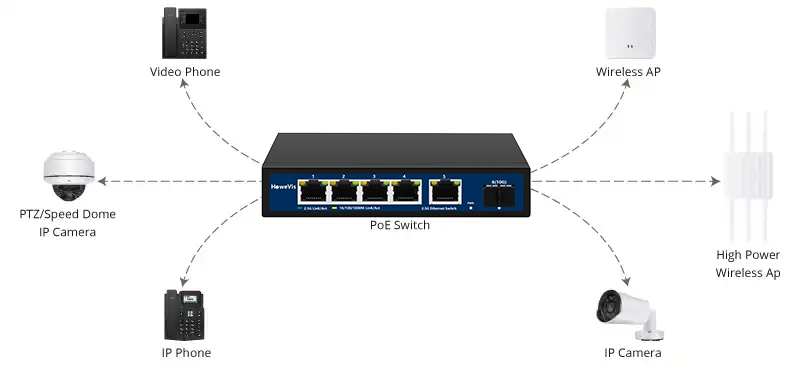
Key Featureswe
When considering different five-port POE switches, examining their key features is crucial. These switches often come with a variety of functionalities and capabilities. Some essential elements to consider include:
- Power over Ethernet (POE): One of the main advantages of a 5-port POE switch is its ability to provide power to connected devices, such as IP cameras or wireless access points, through the Ethernet cables. This eliminates the need for additional power sources and simplifies installation.
- Gigabit Ethernet Ports: Look for switches offering gigabit Ethernet ports, which provide faster data transfer speeds than standard Ethernet ports. This is especially important if you have bandwidth-intensive applications or devices that require high-speed connectivity.
- VLAN Support: Virtual Local Area Network (VLAN) support allows you to segment your network into separate virtual networks, enhancing security and improving network performance by reducing broadcast traffic.
- Quality of Service (QoS): QoS ensures that certain types of network traffic receive priority over others, enabling smoother operation for time-sensitive applications like video streaming or VoIP calls.
- Easy Installation and Management: Consider switches with user-friendly interfaces and intuitive management tools that simplify setup and configuration processes.
Suitability for Your Needs
Once you have identified the key features of different five-port POE switches, evaluating their suitability for your specific networking needs is essential. Consider factors such as:
- Scale: Determine whether a five-port switch provides sufficient capacity for your devices and any potential expansion plans.
- Compatibility: Ensure that the switch is compatible with your existing network infrastructure, including routers, access points, and other devices.
- power requirements: You should consider the power requirements of your connected devices and ensure that the switch can provide adequate power to support them.
- Budget: Evaluate the pricing of different switches and compare them to your budget constraints while considering that investing in a high-quality switch can lead to better performance and longevity.
FAQs
What does a five-port desktop switch do?
A 5-port desktop switch allows you to expand your network by connecting multiple devices, such as computers, printers, and gaming consoles, using Ethernet cables. It acts as a central hub, enabling these devices to communicate with each other and access the Internet.
What is the difference between PoE and PoE switches?
PoE stands for Power over Ethernet, which allows data and power to be transmitted over a single Ethernet cable. A PoE switch is a network switch that provides energy to PoE-enabled devices through the same cable used for data transmission. PoE switches enable you to power devices like IP cameras or wireless access points without separate power cables.
How many ports can a PoE switch have?
The model and brand of a PoE switch determine the number of ports. However, standard options include 4-port, 8-port, 16-port, or even higher port counts. When choosing a PoE switch, consider the devices you need to connect and ensure enough available ports.
What is the disadvantage of the PoE switch?
One potential disadvantage of using a PoE switch is its limited power budget. Each port has a maximum power capacity it can deliver to connected devices. If your powered devices require more power than what the switch can provide per port or in total, you may need additional equipment or higher-capacity switches.
Why use a PoE switch?
Using a PoE switch offers several advantages. First, it simplifies installation by eliminating the need for separate power cables for powered devices. Second, it provides flexibility in device placement since you’re not restricted by proximity to electrical outlets. Third, it enables centralized management and control of data and power for efficient network administration.
Is PoE safe for non-PoE devices?
Yes! Connecting non-PoE devices to a PoE switch is safe. The switch automatically detects whether a connected device is PoE-compatible or not. If it identifies a non-PoE device, it will only transmit data and won’t supply power through the Ethernet cable. This ensures that your non-PoE devices remain unaffected when connected to a PoE-enabled switch.
